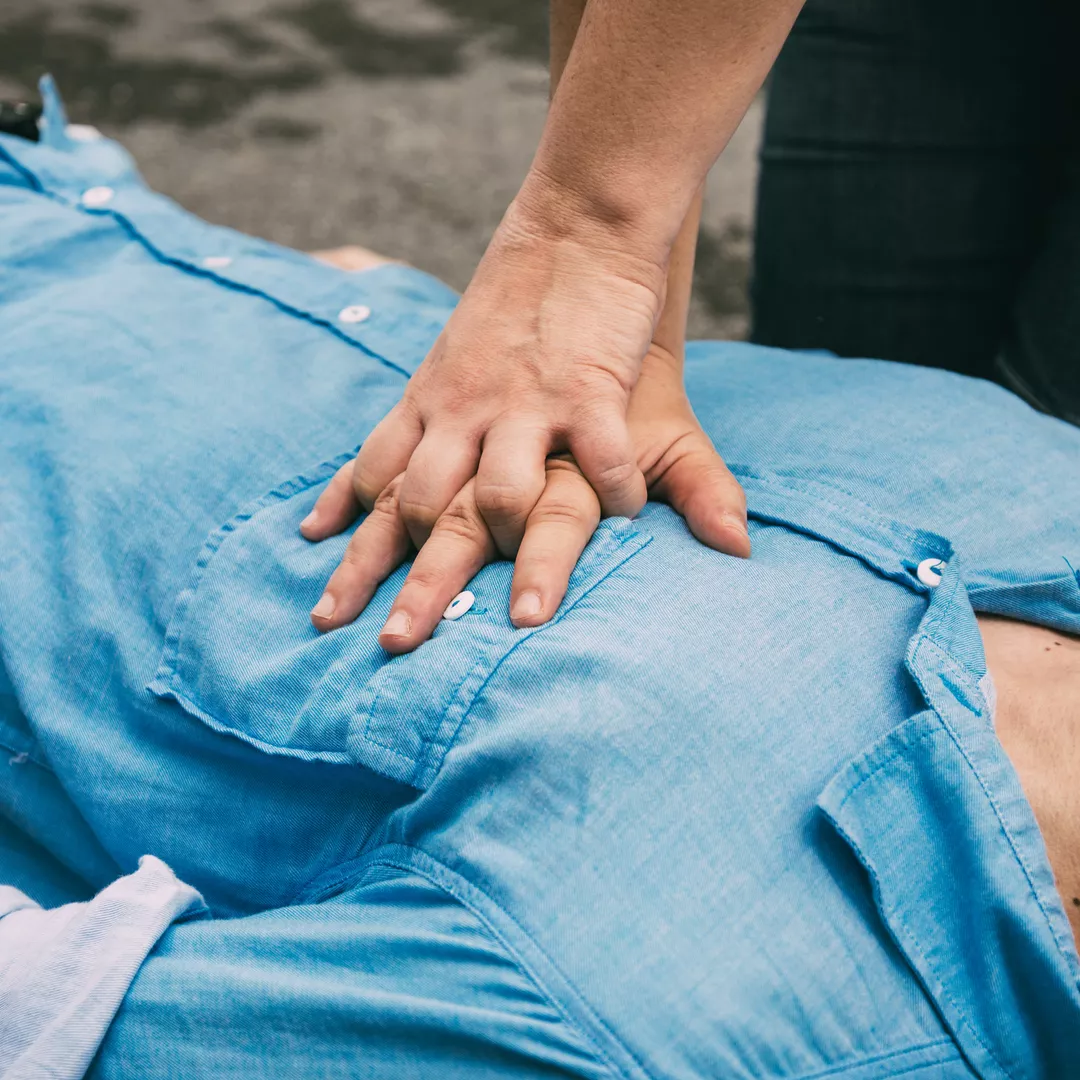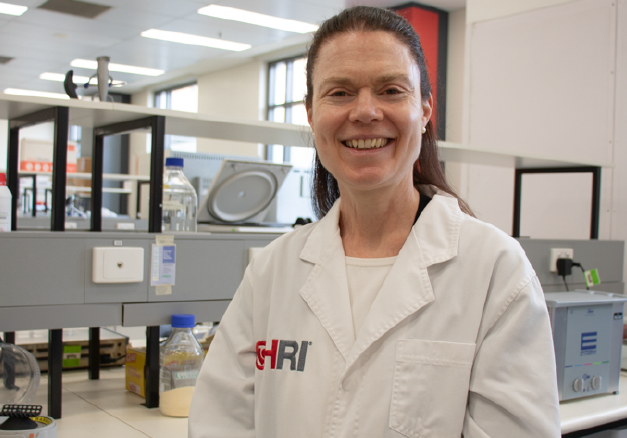What does CPR stand for?
CPR stands for cardiopulmonary resuscitation. It is a life-saving skill that can be used in emergency situations if someone has stopped breathing or their heart has stopped, such as in a cardiac arrest.
The combination of techniques used in CPR are chest compressions and mouth-to-mouth resuscitation (rescue breathing). The chest compressions mimic how the heart pumps, and mouth-to-mouth supplies oxygen. With these techniques, CPR can help to keep blood circulating through the body so that vital oxygen can continue to be delivered to the brain and other organs.
CPR can save lives – it is always better to try than to do nothing at all. Without CPR, it only takes a few minutes for the brain to become damaged due to a lack of oxygen.
When is CPR needed? UK CPR Guidelines
CPR is needed when a person is:
- Unconscious
- Not breathing normally, such as gasping breaths
- Not breathing at all.
Start CPR are soon as possible in situations like these, for most effectiveness.
When should CPR commence?
CPR can save lives, but it needs to be started as soon as possible on the person needing assistance to be most effective.
If you are unsure of how to perform CPR, immediately call emergency services to request an ambulance. The operator will guide you through how to perform CPR until the paramedics arrive or until an automated external defibrillator becomes available.
CPR Steps
The steps involved in CPR can be remembered through the acronym DRS ABCD.
- D – Danger: Check for danger and ensure the area is safe and free of hazards before continuing
- R – Response: Check for a response from the patient and whether they are breathing normally.
- S – Send for help: Send for help if the patient is not responding. Call emergency services or shout for assistance and direct someone to do so and ask for an ambulance. The emergency services operator will guide you through CPR until the ambulance arrives.
- A – Airway: Check that the patient’s airways are clear, by opening their nose, mouth and throat. Remove any foreign matter and blockages, such as vomit, blood or food.
- B – Breathing: Check whether they are breathing normally: look, listen and feel for their breaths. If they are breathing normally, gently roll them onto their side (recovery position). This side position ensures their airways remain open. If they are not breathing normally or at all, start CPR.
- C – CPR: Start CPR, with 30 chest compressions followed by two mouth-to-mouth breaths.
- D – Defibrillator: Continue CPR until an automated external defibrillator (AED) becomes available. Attach the AED’s pads to the patient’s skin and follow the voice prompts provided by the AED.

CPR Guide: How to perform CPR
The techniques in CPR alternate 30 chest compressions with two breaths of mouth-to-mouth resuscitation.
Chest compressions for children and adults
- Lie the patient on their back.
- Place the heel of one hand on the lower half of their breastbone, in the middle of their chest. For older children and adults, place your other hand on top of your bottom hand and grasp your wrist, or interlock your fingers.
- Position yourself above the patient’s chest. Keep your arms straight and press down with your palm approximately one-third of the depth of their chest, then release the pressure. This counts as one compression. Compressions should be performed at a rate of 100–120 compressions per minute, ie, around two compressions every second.
- Continue giving 30 compressions, followed by two breaths of mouth-to-mouth. Aim for five sets of compressions and breaths in around two minutes.
Chest compressions for infants
- Lie the infant on their back.
- Place two fingers (or the palm of one hand for larger infants) on the lower half of the infant’s breastbone, in the middle of their chest.
- Press down with your fingers or palm approximately one-third of the depth of the chest, then release the pressure. This counts as one compression. Compressions should be performed at a rate of 100–120 compressions per minute, ie, around two compressions every second.
- Continue giving 30 compressions, followed by two breaths of mouth-to-mouth. Aim for five sets of compressions and breaths in around two minutes.
If you get tired while performing CPR, ask bystanders for help. Rotate the rescuer after two minutes of chest compressions, with as little disruption as possible.
Mouth-to-mouth resuscitation (rescue breaths) for children and adults
- Open the patient’s airways by placing one hand on their forehead and the other hand on their chin to gently tilt their head back.
- Pinch the soft part of their nose closed with the index finger and thumb of one hand.
- Open their mouth with your other hand.
- Take a breath and place your lips over the patient’s mouth. Make sure you have a good seal so that no air can escape.
- Blow steadily for one second, watching for their chest to rise.
- After each breath, watch for their chest to fall. Place your ear and face close to their ear and nose to check whether air is being expelled.
- If the patient’s chest is not rising with each breath, check again for any blockages in their mouth and remove them.
- Take another breath and repeat, ensuring the patient’s chin is still lifted and tilted.
- Continue giving 30 compressions, followed by two breaths of mouth-to-mouth. Aim for five sets of compressions and breaths in around two minutes.
Mouth-to-mouth resuscitation (rescue breaths) for infants
- Make sure the baby is lying in a neutral position and that their head and neck is NOT tilted.
- Gently lift their chin. Be careful not to press on their throat, as this could prevent air getting into their lungs.
- Take a small breath and cover the baby’s nose and mouth with your mouth. Blow gently for one second, watching for their chest to rise.
- After each breath, watch for their chest to fall. Place your ear and face close to the baby’s ear and nose to check whether air is being expelled.
- If the baby’s chest is not rising with each breath, check again for any blockages in their mouth and remove them.
- Continue giving 30 compressions, followed by two breaths of mouth-to-mouth. Aim for five sets of compressions and breaths in around two minutes.
Breaths to compressions
In general, follow every 30 chest compressions with two breaths. Aim for five sets of 30 chest compressions to two breaths in about two minutes.If mouth-to-mouth is not possible, such as if the patient’s mouth is blocked by something that may be dangerous to the responder, such as blood, continue with chest compressions. They can still save a life.To keep the correct rhythm of the chest compressions, perform them in time with the song “Staying alive” by the Bee Gees or “Row, row, row your boat”.
When to stop CPR
CPR should be continued until the patient starts recovering, an AED becomes available, or the ambulance arrives and the paramedics take over.
If the patient starts recovering and becomes responsive, they may begin to move, breath normally, cough or talk.
Heart attack CPR
A heart attack occurs when blood flow to the heart is blocked and the heart is deprived of oxygen. In a heart attack, the heart usually continues beating. If the person having a heart attack is still talking and breathing, they do not need CPR. Call emergency services immediately, as they do need to get to a hospital straight away for heart attack-specific treatment.
A heart attack increases the risk of cardiac arrest – when the heart stops beating. If the person who suffered a heart attack goes into cardiac arrest and stops breathing or falls unconscious, start performing CPR immediately.
Why you should learn CPR
CPR is a skill that saves lives and that everyone can learn. If CPR is performed within the first few minutes of cardiac arrest or in emergency situations where the patient is unconscious or not breathing, it can double or triple the person’s chance of survival.



